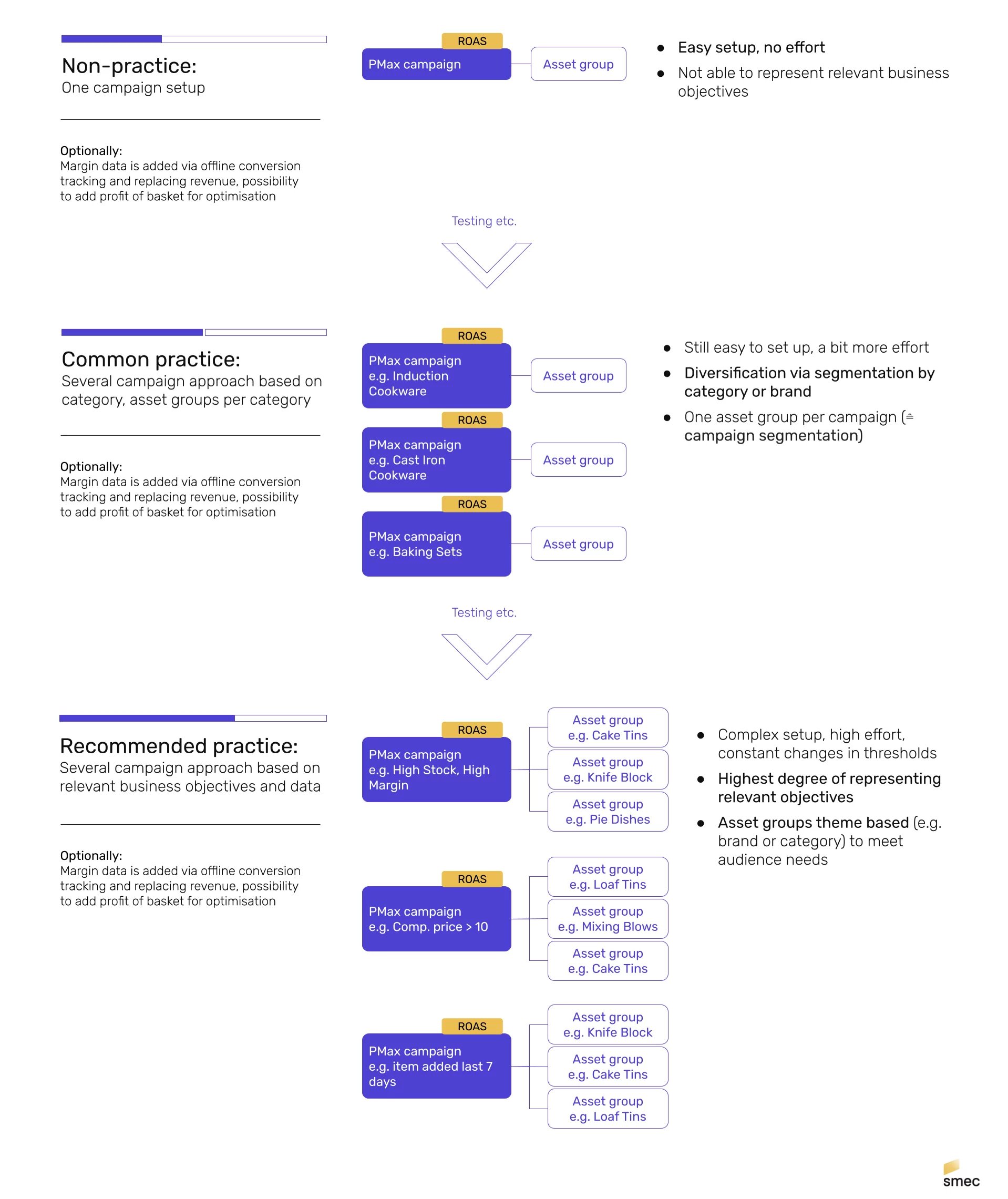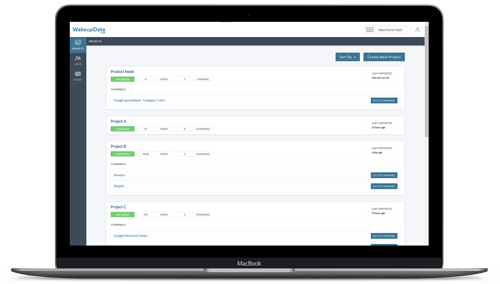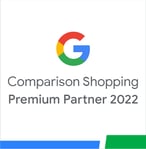Google Performance Max - everything you need to know
Posted on March 26, 2023 (Last Updated: February 27, 2024)
If you work in eCommerce you have probably heard about Google Performance Max. Hundreds of articles and videos have been made about it but what is it really?
Performance Max is a goal-based campaign type where you can work across all Google’s channels such as YouTube, Search, Discover, Display, Maps and Gmail. It uses machine learning to calculate which ad variations would work the best for you based on your main campaign goal and conversion goals. Performance Max promises to help you drive performance and increase your visibility.
There has been some controversy surrounding Pmax and some industry experts are questioning if Google can supply what it has promised to achieve with this campaign type.
In this blog, you will have the opportunity to look into the advantages and disadvantages of using Google Performance Max. Many eCommerce professionals are satisfied with what Google Performance Max has to offer while others are struggling with the lack of control they have over their campaigns. Therefore, we’ll also provide some tips on how you can take back some control with the help of a feed management platform.
What is the purpose of Google Performance Max?
Performance Max uses Google’s automation capabilities to help you perform better. These automations include Smart Bidding, responding to consumer demand shifts, finding shoppers based on the right channels, at the right time etc.
By using multiple channels such as Gmail, Display, Search, YouTube, Discover and Maps you have the possibility to drive up your conversions when the users are ready to convert. You can either choose to focus on generating as many conversions as possible (Maximize Conversion strategy) or focus on the value of your conversions (Maximize Conversion Value strategy) based on your set goals. Google’s machine learning will then automatically bid based on these strategies.
Performance Max also allows you to add values - dynamic, static and rules-based - to optimise for high value leads. By adding them, you can “tell” Google which leads are valuable for your business. It differs for every industry, some value website inquiries, for others phone calls are more beneficial.
Google also offers Insights into Pmax where you can get information on which drivers (creatives, audiences, consumer insights and trends) impact your business’ performance. Insights include top performance drivers which helps you understand performance and what assets are driving its changes. Consumer insights will give you ideas on how to improve landing pages, shopping feed descriptions, and even what products to stock. Next up is Audience persona insights where you can learn the behaviours, interests and characteristics of your audience. Lastly, Search trends and demand forecasts will give you demand trends insights that will help you with setting budgets.
Just recently (Feb 2023) after many negative reviews, Google has listened to the voice of people and shared some Pmax related announcements. Video creation was made easier, now users can directly integrate video creation tools into Performance Max campaign setup and editing workflows.
Advertisers will also be able to run experiments to see the effectiveness of their campaigns. Users can choose from two options namely “Performance Max uplift experiment” or “Performance Max vs. Standard Shopping campaign”.
Another positive is that account-level negative keywords became available meaning that marketers have the chance to exclude certain words that wouldn’t not suit the brand.
Best practices
1. Campaign setup
- When setting up your campaign give as much information as you can to help the Machine Learning processes.
- Google advises to run campaigns for at least 6 weeks to have enough data for Machine Learning.
2. Creative
- Is the most powerful tool to drive performance.
- Customise campaigns by providing unique and engaging content.
- Add at least 5 variations of texts and images for the best results.
3. Bid based on your needs
- Bidding is automated but you have to choose what the system should work towards:
- Maximize Conversions strategy: generating as many conversions as possible,
- Maximize Conversion Value strategy: focus on the value of your conversions.
Advantages
1. Bigger reach: by using almost all of Google’s platforms you will have the chance to reach larger audiences to sell your products to.
- These channels include YouTube, Display, Search, Discover, Gmail, and Maps.
2. High level of automation: Google uses Machine Learning in its Performance Max campaigns, which means that after creating different variations of ads, they take the data and analyse which one was the most efficient.
- Marketers can save time and money in the long run.
- Smart Bidding is also based on Machine Learning.
3. All in one place: with Pmax you can save time by not creating several campaigns but just creating one that will work on all channels.
4. Drive store visits and store sales: with Performance Max you can also focus on your brick and mortar stores.
- Just select the “Local store visits and promotions” goal to drive offline sales.
5. Insights: Pmax offers Insights where users will be provided with different statistics that they can use to make changes to their campaigns
- These include consumer trends, audience persona insights, top performance drivers etc.
Disadvantages
1. Lack of visibility: many paid media specialists have come across this problem with Pmax campaigns. One issue is that even though Performance Max informs users on what they should advertise and where, it:- Doesn’t specify how channels are performing, it just lumps them all together - you won’t know which platforms’ ads are actually converting.
- Doesn’t provide search term reports - you have to blindly follow Google’s advice.
2. Minimal control: because of the automated Smart Bidding system advertisers lose their control over bidding.
- This can be a problem for experts who prefer to have control over every aspect of the advertising process.
- Marketers have to advertise on all platforms, even if they don’t like Display or don’t believe they have conversions from Gmail for example.
- For a longer explanation, watch Mark Tillison’s video on why Pmax isn’t as great as Google advertises it:
- Users won’t have an understanding of what is happening and why, they will just have to believe that Google is doing the best for them.
4. Not fully automated: although Google’s machine learning can save a lot of time for users it’s still not perfect.
- You may need to assist the system to minimise the chances of shoppers getting led to landing pages that are similar to what they are searching for but not the right product.
- Pmax might not understand subtle differences between similar search intents.
- This can lead to high bounce rates and low quality scores resulting in inefficient ads.
5. Not for everyone: advertising agencies can be one of the users who might come across certain problems.
The effect of criticism
As mentioned above, Google has announced some new features due to complaints. These problems included the difficulty of adding negative keywords. Advertisers had to create negative keyword lists individually for each campaign and hand them to their Google Ads representatives.
Many marketers had questioned if Performance Max is actually performing better than Shopping ads. To answer that question and resolve any problems, Google has come up with its A/B testing.
It is important to remember as Brian Lavery, the head of Shopping ads in UK and Ireland, said users should feel free to share their opinions and feedback with Google because this is how they can improve Pmax.
So how can you use Pmax to its full potential?
Using the right structure can go a long way, therefore we advise you to choose one that best suits your company. Ecommerce specialist, Mike Ryan has shared his insights on three possible campaigns to use: non practice, common practice and recommended practice.

Non-practice: The simple way to manage your single asset group. Least amount of success.
Common practice: A bit more advanced, this is the most commonly used structure. For both small and larger businesses.
Recommended practice: Most complicated but with the best foreseeable results.
As mentioned above, providing as much sufficient data as possible is a must for Performance Max campaigns to perform optimally, and we can help you with that.
Google Performance Max when it works
Check out this successful Performance Max implementation that has helped RAINS grow quicker. Our partner Searchmind has used the WakeupData feed management platform and RAINS's creative edge to grow revenue with 120% across all Ads accounts. This guest blog gives you a detailed view into how you can achieve success with Google Performance Max.
WakeupData’s greatest mission is to help marketers succeed in eCommerce. We simplify and automate complicated tasks to save you time and money. Our platform, WakeupData Connect, was designed to optimise and automate your product feed data in a way that will make exports to various channels easier and more efficient.
If you want to improve the quality of your product feed or make it easier to scale to new markets, start with a free demo today, and feel free to ask any feed related questions.




